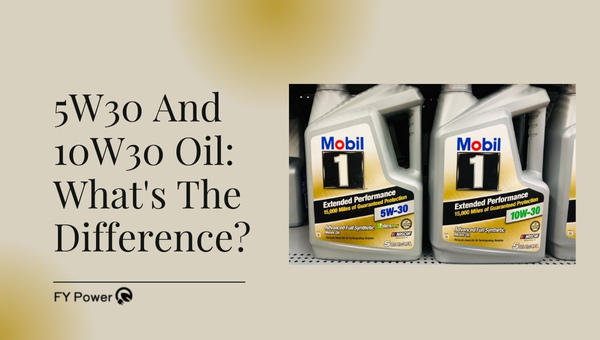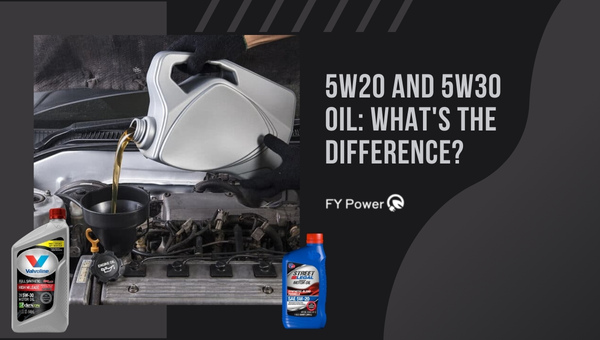When I laid my hands on the Renogy 100-Watt Solar Panel, I knew I was about to step into the world of renewable energy, and boy, was I eager! Imagine harnessing the sun’s power to run all your gadgets.
That’s what this game-changer promises. Are you curious about turning up your green energy game without any fuss? Keep reading! This isn’t just another solar panel review. It’s a journey into efficient and eco-friendly power that could revolutionize how you light up your life!
If you’re asking whether the Renogy 100-Watt Solar Panel is worth your buck, here’s my take: It’s not just worth it; it redefines value for money in renewable energy tech. Picture this – high efficiency, sleek design, and durability that withstand Mother Nature’s mood swings.
My experience with it has been stellar (no pun intended). From immaculate packaging to its top-notch performance under varying weather conditions—it’s clear that Renogy didn’t cut any corners.
What You’ll Discover Inside:
- A straightforward scoop on real-world solar panel performance
- Practical tips from an actual user (that’s me!)
- Key details that make or break solar panel choices
- The nitty-gritty on installation – no tech jargon involved!
Unboxing the Renogy 100 Watt Solar Panel
I got my hands on the Renogy 100 100-watt solar Panel recently. I was eager to open it up and see what this gadget had in store for me.
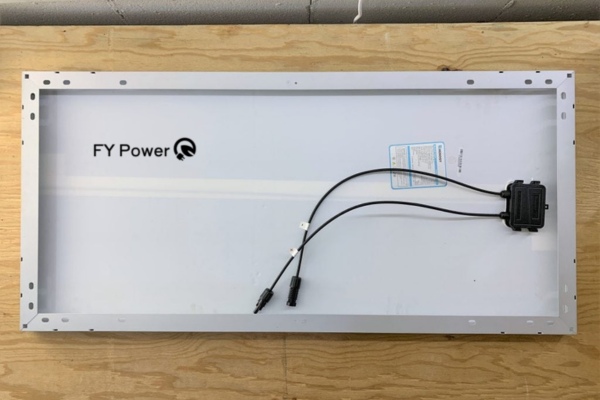
First Glance Impressions
When I first took the panel out of its box, I was struck by its look. It had a slick, shiny surface that caught my eye right away. The panel felt strong and well-made too. When I ran my fingers over it, it did not seem like it would break or bend easily. Its corners were smooth, with no sharp bits sticking out to catch on things.
The panel’s color was a deep black that looked serious and ready for business. It wasn’t just nice to look at; it also seemed like something that was built to last. There were metal frames around the edges that shone in the light and made the whole thing feel sturdy.
It’s got this glassy cover on top as well, which is meant to protect it from weather but still let sunlight through without trouble. You can tell they thought about how to make sure this panel works all right no matter what Mother Nature decides to throw at you.
What’s Inside The Box?
Inside the box, there were several pieces:
- The solar panel itself: That’s the main part of course – all neat with its monocrystalline cells aligned perfectly under a thick sheet of tempered glass.
- A set of Z-brackets: These are super important for hooking up your solar panel securely whether you’re mounting it on top of your RV or keeping it on a flat surface.
- Screws and bolts: You can never have too many! There’s enough here for fixing everything together without needing an extra trip down to the hardware store.
- A pair of 31-inch cables: They’ve got MC4 connectors already fitted onto them so you can plug them right into other solar system parts without fussing around.
Each thing inside that package had its use spelled out clearly in an instruction booklet they included too – very helpful if you’re new at setting up solar panels.
All these bits ‘n’ pieces aren’t just tossed in there either; they’ve got their own spots in foam inserts holding everything snug so nothing gets damaged when moving about during delivery which is a plus point for sure.
Key Specs at a Glance – Decoding What Matters
When looking at the Renogy 100 Watt Solar Panel, it’s like meeting someone special: you just know there’s more than meets the eye. I want to break down why this solar panel is catching the eyes and making people nod with approval.
First off, let me lay out its specs in a neat little table that anyone can understand:
| Feature | Spec |
|---|---|
| Solar cell type | Monocrystalline |
| Max power (Pmax) | 100W (That’s 100 watts of electricity) |
| Max power voltage (Vmp) | 18.6V (This means it can put out up to 18.6 volts) |
| Max power current (Imp) | 5.38A (And this is measuring how strong the electric current is; it comes out as 5.38 amps) |
| Open circuit voltage (Voc) | 22.3V (Now, when it isn’t connected to anything, it still pushes out a handsome voltage of about 22.3 volts) |
| Short circuit current (Isc) | 5.86A (If things go wrong and wires cross, this current will flow through at nearly 5.86 amps) |
| Dimensions | 42.4″ x 20″ x 1.38″ or for those who love metrics: *1077mm x *508mm* x 35mm *(It’s not too big or small, just the right size for handling.) |
| Weight | Weighs in real life at about 13.6 lbs (6.2 kg), but they state It’s slightly heavier on paper: 14.3 lbs (6.5 kg) |
Installation & Experience with the Renogy 100W 12V Monocrystalline Solar Panel
Setting up the Renogy 100 Watt Solar Panel was an experience I looked forward to. With the promise of harnessing sunlight into usable power, I knew getting this solar panel up and running would be essential. Here’s my detailed walk-through.
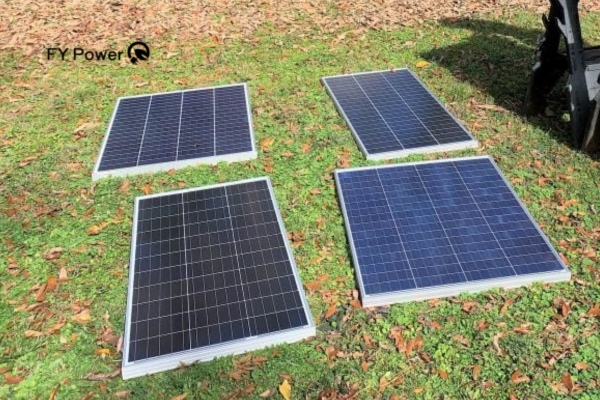
Setting It Up
Let me tell you, putting together the Renogy 100 Watt Solar Panel wasn’t too hard. Let’s go through each step:
- Finding the Perfect Spot: First, I hunted for a sunny place where shadows wouldn’t creep over the panel during high sun hours.
- Unpacking with Care: Out of the box, gently! Every part is important.
- Mounting Framework: Depending on your setup—whether it’s on a roof or ground—I placed sturdy mounts to hold the panel firmly.
- Attachment Time: I fixed metal brackets to pre-drilled holes on the panel sides and secured it onto my mounting frame.
- Wiring Works: By using compatible wiring (covered in shielding for protection), I connected positive to positive and negative to negative from the solar panel to the charge controller.
- Final Checkup: Safety first! Double-checked connections, then aimed it face-up towards where the sun tracks across the sky—one best practice is morning east alignment.
Portability Check
Now, let’s chat about moving this solar buddy around:
- Size Does Matter: Though it’s pretty long and wide in dimensions (42.4″ x 20″), handling wasn’t so difficult; kind of like carrying a thin TV screen (but more careful).
- Lift With Ease? The weight was doable (13.6 lbs). Think lifting a medium-sized pet dog—it requires attention but not superhuman strength!
- Setup Shuffle: When moving from one spot to another or adjusting angles for light-catching—it felt like maneuvering usual backyard gear.
Also Read: Powering Possibilities: What Can a 7000 Watt Generator Run?
Performance Evaluation of Renogy’s Best 100-Watt Solar Panel
When it comes to choosing a solar panel, the Renogy 100 Watt Solar Panel stands out. I took a closer look at how this panel performs. How good is it really? Let’s dive into the details.
Power Output under Different Conditions
To get a complete picture, I tested the power output in several types of weather. Here’s what I found:
- Sunny Days: As expected, on bright sunny days, the panel gave me the full 100 watts of power. It was impressive how steady the performance was with clear skies.
- Cloudy Days: On days when clouds covered up most of the sky, power production did go down a bit. Still, I got about 70% of its max output, which isn’t bad at all for solar.
- Rainy Days: When rain came pouring down, I found that even then this solar panel pushed through and provided me with some power. Of course, much less than on sunny days but still around 25% to 30%.
- Changing Temperatures: Whether it got really hot or quite cool outside didn’t affect its performance by much. That’s a solid plus in my book.
Durability Tests
A good solar panel must stand up to nature’s challenges. Here’s what happened when this panel faced tough conditions:
- Wind Exposure: Even with strong winds blowing against it, the solar panel held its own and stayed intact.
- Rain Exposure: After several rainy days in a row, there were no signs of water damage or wear.
- Hail Simulations: Though not an everyday situation for many people, this panel survived my hail test too—small ice cubes thrown against it didn’t leave any marks.
The strong build quality really shows in these tests as nothing seemed to phase this durable Renogy 100-watt solar Panel much.
Also Read: DIY Solar Charger: Create 12V Battery Power in 5 Steps
Detailed Analysis of Build Quality – Behind a Robust Design
When I got my hands on the Renogy 100-Watt Solar Panel, I knew I needed to dig deep into its build quality. Why? Because in the world of renewable energy technology, durability is not just a perk—it’s essential. So, let me take you through what makes this panel sturdy and dependable.
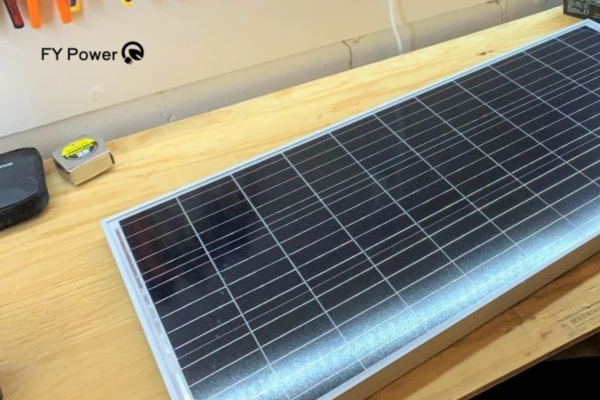
First off, the solar cells themselves are monocrystalline. What does that mean? Without getting too techy, they’re made from a single crystal structure—think high purity means high quality. That translates to better performance even when the sun isn’t shining as bright as we’d like it to.
Now, let’s talk about protection because those cells aren’t left out in the open. Nope! The Renogy solar panel boasts a hardy aluminum frame which gives it some serious armor against knocks or drops when moving around.
Besides just being tough, this frame has been engineered so that you can set up the panel at different angles with ease—always catching rays at optimal angles for more juice!
But what surrounds and shelters those precious cells matters too. They’re hugged tightly by a sheet of tempered glass that’s not only thick but also anti-reflective—that means more light gets soaked up rather than bounced off wastefully.
Also Read: Best 4000 Watt Generators
Comparing Size & Weight Against Performance Expectations
The age-old question: does size matter? When tucking under my arm this neat 42 by 20-inch slab called the Renogy 100 Watt Solar Panel, I pondered just that—how do its dimensions weigh against expectations of power?
With portability being touted often these days—Renogy seems to have struck an interesting balance here. Light enough so I’m not working out unintentionally when carrying (only about 13 pounds!), yet sizable enough where sunlight doesn’t play hide and seek on a tiny surface area—a common flaw with some compact panels.
Here’s how its stats stack up against others:
- Size: Just wide enough without feeling like you’re wrangling billboard-sized gear.
- Weight: Not feather-light but hey—you want sturdy don’t ya?
Performance-wise? Well… they weren’t kidding saying this is one of their best panels yet! A capable contender delivering satisfying watts consistently—no surprises or disappointing dips here whether it’s sunny or slightly gloomy skies above adding weight otherwise wouldn’t do much good if output was lackluster now would it?
And efficiency—isn’t wasted with extra bulk either! Monocrystalline panels aren’t exactly new kids on the block but implementing them within modest footprints without losing efficacy—that’s neat engineering!
Comparatively speaking whilst hoisting onto RV roofs or slipping behind camper seats among sibling products even beyond Renogys range; our centimeters and kilograms seem almost tailored for upbeat modern nomads keen on smart efficient setups—not oversized rigs dragging down adventures beneath cumbersome heftiness no sir!
Also Read: LiFePO4 Batteries: Solar Panel Charging Simplified
Pros And Cons of Renogy 100 Watt Solar Panel
Now, let’s talk straight about the good and not-so-good things about this Renogy 100 Watt Solar Panel. After spending a lot of time using it, I have noticed quite a few things worth mentioning.
Pros:
- It’s pretty efficient: With this solar panel, I got close to the max power of 100W most times when the sun was shining bright. This is because it’s a monocrystalline panel, which is known for good performance.
- Easy to set up: I found putting this panel to work pretty simple. There weren’t many complicated parts, and once I figured out where everything goes, it was like connecting dots.
- Sturdy build: It felt well-made in my hands. The frame is strong and doesn’t bend easy which makes me think it’ll last a long time.
- Compact for its power: Considering it provides 100 watts, its size isn’t huge. It has enough power for small electronics without taking up too much space.
- Kind to the environment: By using a renewable energy source like the sun, there are no nasty gases or waste from the energy I get from this solar panel.
Cons:
- Not so light on the wallet: The price stings a bit more than other options with similar specs – quality comes at a cost.
- A little hefty: At over 13 pounds (6 kg), you might not call it lightweight. If you plan on moving it around often, prepare for some lifting!
- Weather dependent: Now that can’t really be helped – no sun means no power. On cloudy days or in shady spots, don’t expect much juice from this guy.
- Additional equipment needed: You can’t just plug your phone straight into it; you need extra gear like charge controllers or batteries to really make use of that electricity.
Recommendation – Who Should Buy It?
After all, is said and done with testing and trying out every part of this Renogy solar panel’s life under my roof and sky—I would say that certain people will get their money’s worth more than others.
This one’s great for:
- Anyone who likes camping or travels often in an RV: Because you can move it relatively quickly from place to place if needed—though still might break a sweat—and provides enough charge for modest needs like lighting or charging phones.
- Folks looking into disaster prep: If storing extra water or dry food is your thing—add one of these panels to your stash; when things go dark, you’ll still have some power without needing fuel that might run out.
- Homeowners wanting to chip away at their electric bills: Installing one (or more) cuts down how much electricity you pull from the grid—not only does Mother Nature thank you but so will your wallet over time.
- People eager to learn about green tech: It’s fun watching sunlight turn into power right before your eyes—it feels almost magical—and gives first-hand experience with renewable energy technology!
In contrast:
- Urban apartment dwellers likely won’t find as much value—without open spaces; finding enough sunlight becomes tricky plus rigging panels on balcony railings probably won’t sit well with neighbors (or building codes).
- Anyone needing lots of power quickly: If running air conditioners or large appliances directly off solar is what you’re aiming for—you’ll need something bigger than what 100 watts can offer.
FAQs
Can You Connect Multiple Panels Together?
Yes, absolutely. You can connect multiple Renogy 100 Watt Solar Panels together to increase your power output. This setup is called a solar array.
How Long Does It Last Under Harish Weather Conditions?
A Renogy 100-watt solar Panel is built to last and can generally endure harsh weather for many years. Depending on maintenance and conditions, it typically has a lifespan between 25 to 30 years.
How Much Energy Can One Expect to Generate Daily?
The energy generated daily depends on the sunlight exposure but on average, a single Renogy 100 Watt Solar Panel can produce around 400 Wh per day in optimal conditions.
Conclusion
In wrapping up this review, I find the Renogy 100-Watt Solar Panel to be a solid choice for someone diving into the realm of solar energy. It stands as an ally in achieving energy independence and harnessing renewable sources.
Whether it’s enduring rough weather or delivering consistent power, this panel checks off many boxes that a reliable solar panel should. The simple installation process compliments its robust build quality, and its efficiency does not disappoint even when pitted against the capriciousness of nature.
In an age where renewable technology is progressing by leaps and bounds, the Renogy 100W panel proves to be a testament to solar innovation with its unyielding performance.
